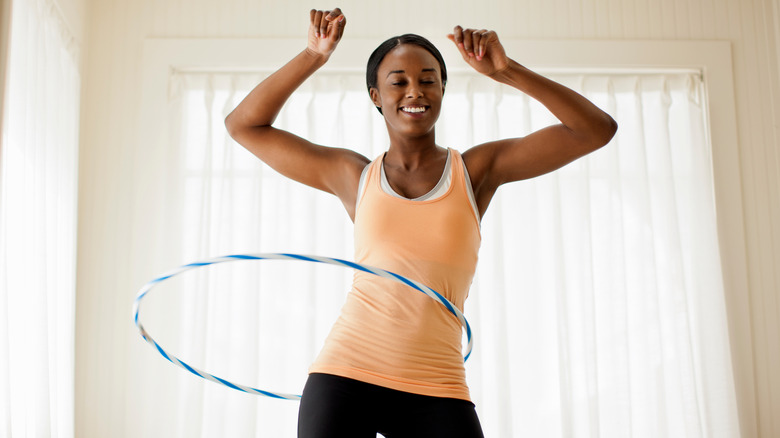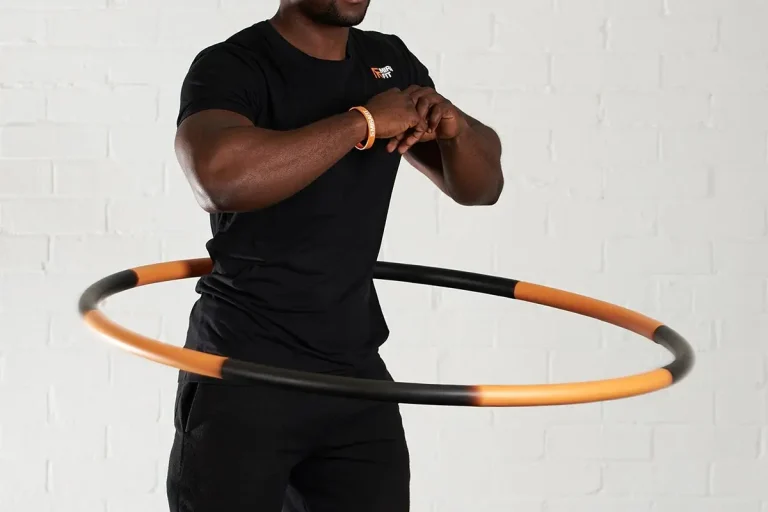Reviving a Favorite from Childhood: The Revolutionary Ability Advantages of Hula Hooping
When you think of a hula hoop, your mind might instantly transport you back to a carefree childhood, a toy spinning playfully around your waist in a sun-drenched backyard. However, this seemingly simple toy has made a significant comeback, not just as a form of nostalgic recreation, but as a dynamic and effective tool in the world of fitness. Integrating hula hooping into your workout routine offers a host of surprising benefits, transforming a fun pastime into a serious exercise regimen. This comprehensive post will explore why hula hooping deserves a permanent spot in your fitness toolkit.
More Than Just a Toy: The Core-Strengthening Powerhouse
At its heart, hula hooping is a phenomenal core workout. The continuous motion required to keep the hoop spinning engages and strengthens a wide array of muscles in your abdominal region and lower back. The constant stabilization and controlled movement activate your obliques, rectus abdominis, and erector spinae, leading to improved core strength and stability. A strong core is the foundation of almost all physical movement, contributing to better posture, reduced risk of back pain, and enhanced performance in other physical activities. The act of hula hooping is a dynamic plank, constantly challenging your central muscles to maintain balance and control.
A Full-Body Calorie-Burning Experience
While the core is the star of the show, hula hooping is far from a one-dimensional exercise. Keeping the hoop in motion requires your entire body to work in harmony. Your legs and glutes work to generate the power and rhythm, your arms and shoulders are engaged in maintaining balance, and your back muscles are constantly active. This full-body engagement translates into a significant calorie burn. Depending on the intensity, speed, and size of the hoop, a hooping session can rival other forms of cardio like brisk walking or a gentle jog. It’s an effective way to elevate your heart rate and contribute to your overall energy expenditure, which is crucial for weight management and cardiovascular health.
Improving Flexibility, Balance, and Coordination
The rhythmic, circular motions inherent to hula hooping are excellent for improving flexibility and mobility in your hips and spine. The fluid movements help to increase your range of motion, which is essential for preventing injury and maintaining functional fitness as you age. Furthermore, the act of keeping the hoop stable on your body is a continuous balance challenge. You’re constantly making micro-adjustments with your body to prevent the hoop from dropping. This hones your sense of balance and proprioception—your body’s awareness of its position in space. The hand-eye and full-body coordination required to learn and master different hooping tricks also translates to improved coordination in other areas of life and sports.
A Low-Impact, Joint-Friendly Cardio Option
For many people, high-impact exercises like running or jumping can put undue stress on joints. Hula hooping provides a fantastic, low-impact alternative for cardiovascular exercise. The smooth, circular motion is gentle on your knees, ankles, and hips, making it an ideal choice for individuals recovering from an injury, or those simply looking for a joint-friendly way to get their heart rate up. This accessibility makes it a sustainable form of exercise that can be enjoyed by people of all ages and fitness levels.
A Workout for the Mind: Stress Reduction and Mindfulness
Beyond its physical benefits, hula hooping also offers a unique mental and emotional advantage. The rhythmic, repetitive nature of the exercise can be incredibly meditative. It requires focus and concentration, which can help clear your mind and reduce stress. The act of finding your flow with the hoop can be a mindful practice, allowing you to be fully present in the moment. The playful nature of hula hooping also adds an element of joy and fun to your workout, making it feel less like a chore and more like a form of self-care. This psychological benefit can lead to greater workout consistency and a more positive relationship with exercise.
Getting Started: Tips for Integrating Hula Hooping
Ready to add hooping to your routine? Here’s how to begin:
- Choose the Right Hoop: Don’t grab a lightweight, flimsy toy hoop. Fitness hoops are heavier and larger in diameter, making them easier to control and more effective for a workout.
- Master the Basic Movement: Start with the hoop at your lower back. Give it a good spin and use a forward-and-back or side-to-side motion with your hips and core to keep it going.
- Start Small, Build Up: Begin with short sessions of 5-10 minutes and gradually increase your time.
- Explore a Variety of Moves: Once you’ve mastered the waist hoop, you can move on to hooping on your arms, legs, or even incorporate it into dance-like movements.
- Warm-Up and Cool-Down: Just like any workout, perform a brief warm-up before you start and a cool-down with some stretches afterward.
Hula hooping is a testament to the idea that effective exercise doesn’t have to be complex or arduous. It’s a joyful, engaging, and highly beneficial activity that strengthens your core, burns calories, and boosts your overall well-being. So, dust off the old hoop—or better yet, invest in a new fitness one—and rediscover the simple, powerful pleasure of this wonderful form of exercise.



